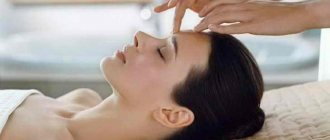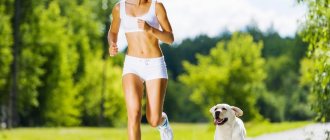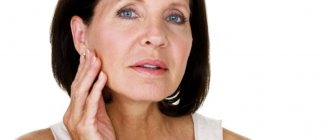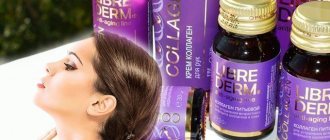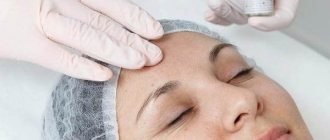Did you know that the youth of the face largely depends on the muscles of the neck, because thanks to the correct balance, the face receives oxygen and nutrients? Therefore, a set of rejuvenating exercises needs to start from the neck!
Traditionally, Revitonics pays, first of all, attention to the neck muscles, because the youth of the face directly depends on their condition. The correct balance of the neck muscles determines whether our face will receive a sufficient amount of blood - and therefore oxygen and nutrients necessary to “feed” both our brain and our skin. Taking this fact into account, our mini-complex was built, in which we start working with the neck, and only then move on to various areas of the face.
We remind you that these techniques can be performed if there are no contraindications for facial massage and exercise therapy exercises for the neck-shoulder girdle.
"Feast"
This technique works with the occipital region - the basis of the youth of our face. Removes pathological deflection in the cervical region, returns the correct statics of the neck. Relieves tension from the neck and lengthens its back surface. Helps reduce the “withers” in the area of the seventh cervical vertebra. Improves blood supply to the head, helps cope with headaches caused by tension in the suboccipital muscles.
Exercise helps:
- start blood supply to the head;
- relax and lengthen the back of the neck;
- return the “natural” statics of the neck;
- get rid of headaches;
- bring the occipital lymph nodes back to life;
- reduce lymph-fat deposits in the area of the seventh cervical vertebra.
The technique is performed on the principle of post-isometric muscle relaxation. This is a technique in which, after a phase of slight resistance, a phase of muscle relaxation occurs.
Note! The exercise is performed very slowly and carefully.
How to do it: The essence of the work is soft counteraction provided by the hands. Try to overcome the resistance of your hands with your head, holding this position for 1-2 minutes. Everyone has their own strength - focus on comfortable sensations.
Stage 1. Clasp your hands and place them on the back of your head. Tilt your head down. Under the weight of the head, self-stretching of the occipital muscle group occurs. Stay in this position for 30 seconds.
Stage 2. Using your hands to resist, slowly lift your head up. Try to overcome the soft resistance of your hands with your head. Everyone has their own counterforce, focus on comfortable sensations. Try to feel the stretching of the occipital region in two directions: from the occipital region up - towards the crown, and down. This stage should take you 1-2 minutes.
After static muscle tension, the body will reflexively relax them.
Stage 3. While in the same position - hands locked on the back of the head, head down, stop working against resistance and relax. Again, feel how the back of your neck and occipital area are gently stretched under the weight of your head. Stay in this position for 30 seconds.
How much to do: 1-2 times a day.
Why do neck muscles need
In the spine, which consists of five sections, the cervical is the first and most mobile. It would seem what a load is on him. He is not responsible for the ability to walk straight; the body does not put pressure on him. The neck is not related to the weight of the entire body like the lumbar region.
Sections of the spine and structure of the cervical vertebrae
- But, firstly, the head is supported on the neck, the weight of which, as you know, is almost eight kilograms.
- Secondly, the seven vertebrae that make up the cervical area are the thinnest and most fragile in the entire spine.
- Thirdly, the neck is not just a “stand” for the head, connecting the skull to the body. It connects the brain with the spinal cord.
- In addition, muscles pass through the neck, thanks to which the head can move.
- The neck contains arteries that supply oxygen to the brain.
- And finally, here are the nerve endings that send impulses to all significant systems at the top of the human body.
Neck muscle diagram
Doctors today say that one of the reasons for multiple spinal diseases is inactivity. Human activity in almost all areas is associated with a sitting position, at a computer or simply at a desk. Children begin to spend most of their time sitting while still at school, and this continues for many throughout their lives. The result of this is low motor activity, which leads to impaired muscle activity.
Orthopedic chair
Spinal problems are often associated with low physical activity
Important! If the muscles are weakened, the organ cannot fully perform its functions. In the case of the neck, a violation of muscle activity leads to a change in the structure of the vertebral cervical segments, their deformation, the formation of growths, cracks, and so on. In addition, the slightest load on untrained muscles can cause injury, which will lead to the formation of pathology.
What happens when the neck muscles weaken?
- They “freeze” and lose their elasticity.
- The blood circulation process becomes slower.
- Blood stagnates.
- Disturbances in the lymph flow begin.
- The flow of oxygen to the brain is disrupted.
- A constant spasm forms in the cervical area, which increases the load from any action on the intervertebral discs.
- The integrity of the disks is compromised.
- The condition of the neck vertebrae worsens and they become deformed.
- The nerves become pinched.
- The person begins to experience pain.
When muscles weaken, pain occurs
If you want to find out how to choose the best model of neck and back massager with electric elements, and also consider who needs an electric massager and what it provides, you can read an article about it on our portal.
Massage pillow for neck and shoulders
Neck diseases
Pathologies in the cervical area can occur for many different reasons, but 60% of them appear precisely because of untrained and weakened neck muscles.
Table. Neck diseases.
| Name | Description |
| A common disease in which destructive degenerative phenomena begin in the vertebral tissues. It can cause disability and always, from a very early stage, causes severe pain. |
| The disease is directly related to lifestyle. Physical activity, inactivity, hazardous work, habits harmful to health - these are the factors that provoke a hernia. |
| It can occur either due to hypothermia or due to taking an uncomfortable position (of course, it occurs more often with weak muscles). The occipital nerve is pinched, which provokes pain not only in the neck, but also in the shoulder girdle and head. May be due to infection. |
| With this pathology, the vertebrae suffer, or rather, their edges, which become covered with foreign growths. But salt osteophytes also appear for a reason, but because the mobility of the cervical area is reduced. |
| In the neck, these pathologies occur no less frequently than in other vertebral areas. With them, the facet joints are subject to deformation. Since the disease is not inflammatory in nature, it depends on the condition of the muscles mechanically. |
| Lumbago | Many people are familiar with cervicalgia under this name. Muscle spasm causes a wide range of pain, spreading to the entire upper body and head area. |
Training and timely strengthening of muscles (before the onset of the pathological process) allows you to avoid many of the problems described above and maintain the health of the cervical spinal zone, and therefore many other organs and systems of the human body.
By the way. Performing certain physical exercises with a given regularity can train exactly those organs that need training.
Motor activity returns to the muscles, blood flow returns to normal speed, difficulties with oxygen supply disappear, neck flexibility increases, and therefore the ability to resist injury. The organ functions normally, and no pathologies arise in it.
Orthopedic chair for children
Advice. Before choosing any set of exercises and starting to perform it, remember that you should always do muscle strengthening exercises at a slow and calm pace. No sudden movements, ever. Do it in front of a mirror, turn on music whose rhythm is slower than your heartbeat. If you still can't maintain a slow pace, ask someone close to you to supervise and “slow down” you until you get used to it.
"Text Neck Correction"
The exercise allows you to:
- step by step restore the correct cervical deflection;
- relieve stress from all anterior structures of the neck;
- reduce tension and swelling in the larynx;
- lengthen the back of the neck.
Contraindications: all diseases of the thyroid gland (hypothyroidism, hyperthyroidism, autoimmune thyroiditis, nodular goiter, cysts, nodes).
How to do it: Keep your head straight. Clasp the fingers of both hands and place them on the back of the head, placing the thumbs on the border of the hairline. Lock in this position until you feel tight contact of your hands with the back of your head for about 5-10 seconds. Next, gently press the back of your head onto your hands and hold this position for 1 minute.
How long to do: 1 minute, 1 time per day.
Neck and décolleté care
There are various methods and procedures to relieve tension, strengthen muscles and slow down age-related changes in the skin of the neck and décolleté.
Massage of the front and back of the neck
Massage of the front and back of the neck, which runs just below the jaw to the shoulders, has an effective effect and helps to prolong the youth of the skin.
Due to the constant movement of the neck, signs of aging may occur, so it is advisable to use anti-wrinkle products regularly.
The cleavage is the area of exposed skin around the lower neckline, also called the chest area. The thin and delicate skin on this area of the body requires additional daily care and should be protected with the strongest possible barrier to prevent moisture loss. Skin dehydration is known to be the main cause of age-related wrinkles on the neck and décolleté.
The décolleté skin has fewer sebaceous glands than skin on other parts of the body, so it becomes drier due to a lack of natural hydration, which means that wrinkles form easily.
Massage focused on the décolleté area is one of the anti-aging procedures. It is performed using gentle circular movements to avoid damaging the skin.
Skin exfoliation
An effective measure for caring for the décolleté and neck area is exfoliation, which is carried out using special exfoliating cosmetics. Such procedures counteract the signs of aging and leave the skin smooth and silky to the touch.
Hydration
Moisturizing is another important step in caring for the neck and décolleté. To achieve optimal hydration, various creams or oils are used.
Sunscreens
We should not forget about sunscreen, which it is advisable to apply to this part of the body, especially when the clothing has a V-neck.
Vitamins
The consumption of vitamins is of no small importance for maintaining youthful skin in the above areas of the body. A special place is given here to vitamin C. It is a true treasure that helps prolong youth, thanks to its most valuable quality - collagen production. By using berries, citrus fruits, and tomatoes in your daily diet, you can keep your skin firm and elastic for a long time.
Proper precautions must be taken in advance, since it is very difficult for the skin in the neck and décolleté, where age-related changes are already noticeable, to regain a flawless and youthful appearance.
Activities for caring for the neck and décolleté should become habitual, because they take little time and can be done at home every day. Beautiful and well-groomed skin in the décolleté and neck area will help every woman feel young, healthy, and attractive.
“Clear oval” (lengthening the side surface of the neck)
How the reception works:
- tightens the oval;
- removes all sagging in the chin and cheeks;
- improves skin condition;
- lengthens the neck;
- makes it more flexible.
How to do it:
1. In the first phase (30 sec.) we try to bring the muscles of the lateral surface to maximum fatigue.
Slowly, with muscular effort, as if it is difficult for you, lift your shoulder up. Then tilt your head towards your shoulder. You should feel and see that you have the maximum number of folds in your chin area. Hold for 30 seconds. Pay attention to the correct technique: at this time you should bring your shoulder as close as possible to the base of your neck. Return to the starting position.
2. In the second phase , we gently lengthen the neck muscles, freeing the arteries and lymphatic ducts.
We begin the stretching process. One hand rests on the collarbone, the second hand rests on the jaw area. In the tilting position, we stretch the side surface of the neck and lengthen it. Return to the starting position. Also perform the stretch for 30 seconds. If you have time, increase the time to 1 minute.
Perform both phases of the exercise on the other side.
How much to do: 1 time per day.
Tips for everyday life
During recovery, you may find it more difficult to do everyday activities. These tips should help you.
- Make sure your shoulders are back and relaxed, and your head is slightly tilted back. This will help you maintain correct posture. This will also help relax your pectoral muscles and take pressure off your neck and shoulder muscles.
- When sleeping, lie on your back as much as possible. If you need to lie on the non-surgical side, you can place the arm on the operated side on a pillow in front of you. This will prevent you from accidentally spraining your shoulder. Do not lie on the side you are having surgery unless your healthcare provider tells you to do so.
- Do not lift or carry anything heavier than 3 pounds (1.4 kg) on your surgical side. For comparison, an iron weighs approximately 3 pounds (1.4 kg), and a 1/2 gallon bottle of milk weighs 4 pounds (1.8 kg). Check with your healthcare provider before lifting or carrying anything weighing more than 3 pounds (1.4 kg).
- Do not carry a heavy cross-body bag or briefcase on the side undergoing surgery. Consult your healthcare provider before wearing a backpack or backpack.
to come back to the beginning
"Icebreaker"
How the reception works:
- straightens his curled shoulders;
- does not allow slouching;
- visually lengthens the neck;
- makes the décolleté area smooth;
- forms the habit of calm, even breathing;
- instantly calms you down!
Why is the technique called “Icebreaker”? The palms, like the stern of an icebreaker, reveal the chest area with all their weight. To do this, constantly create tension in the tissues in this area in different directions. To feel the powerful resistance force that greets you, do not smooth your skin, but overcome the rigid muscular pull of your pectoral muscles!
Contraindications: breastfeeding. The intake has a strong lymphatic drainage effect, so there is a risk of infection entering the general lymph flow.
How to do it: Clasp your hands, pressing the bases of your palms tightly to the center of your sternum. Inhale and as you exhale, gently lower your shoulders and shoulder blades down. The lock stands statically on the chest. Feel the gentle stretch along the entire line of your shoulder girdle. Make a rolling-pushing movement with the palms of your hands, displacing the breast tissue. Hands move like an icebreaker, point them in different directions, trying to separate the two halves of the chest area.
Breathe calmly and evenly.
Attention! This exercise is performed very slowly. Fascia hates speed! Only forward, smooth movement.
How much to do: 5-6 times, 1-2 approaches per day.
Exercise No. 1: “Pull-Push”
Purpose of reception:
- launching active work of the intercostal muscles, muscles of the chest, upper limbs, deep muscles of the spine;
- improving tissue drainage of the upper limbs and chest;
- improvement of blood circulation in the tissues of the upper extremities and chest;
- return of freedom and ease of movement.
How to do it:
Sit on a chair, straighten your back, bend your knees, without lifting your feet off the floor. Straighten your arms and extend them in front of you. As you inhale, turn your palms towards you and point your arms, bending your elbows, towards your chest, as if you are pulling something towards you. At the same time, stretch your chest forward, slightly increasing your lumbar arch.
Next, as you exhale, direct your arms away from you, straightening them at the elbows and bending your hands at the wrist joints, as if you were pushing something away from you with your palms. Round the thoracic and lumbar regions at the same time. Complete the familiar movement with a rotation in the hip joints, gently roll back and forth on your sit bones, including your entire torso and breathing in the work.
How much to do:
10-12 breathing cycles.
ATTENTION
If you have hypertension, use with caution. Monitor your blood pressure levels after performing the exercise. If there are contraindications to exercise therapy for the cervico-brachial region, check with your doctor whether “Pull-Push” is suitable for you.
View this post on Instagram
Publication from the REVITONIKA School of Rejuvenation (@revitonica_official)


